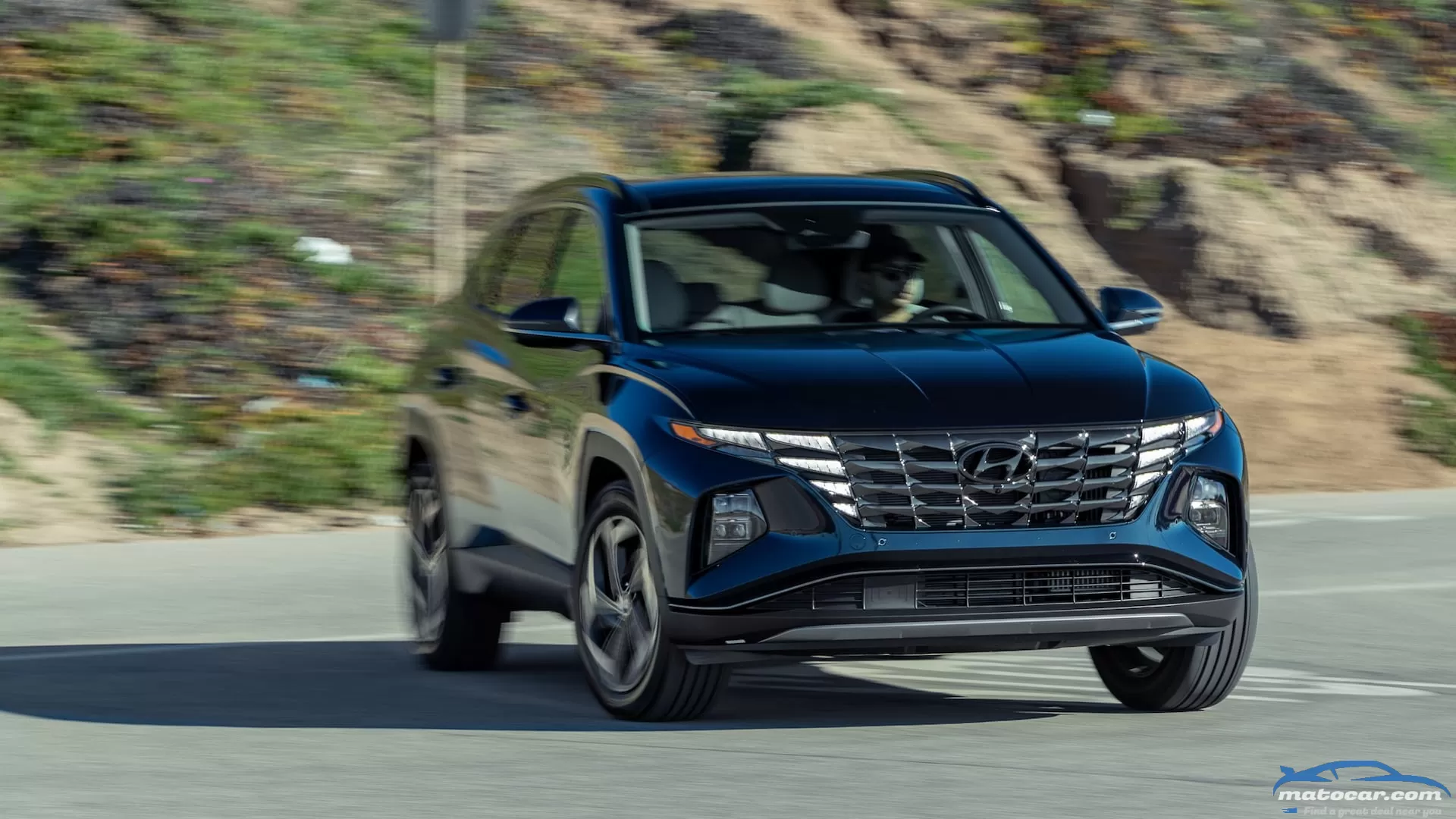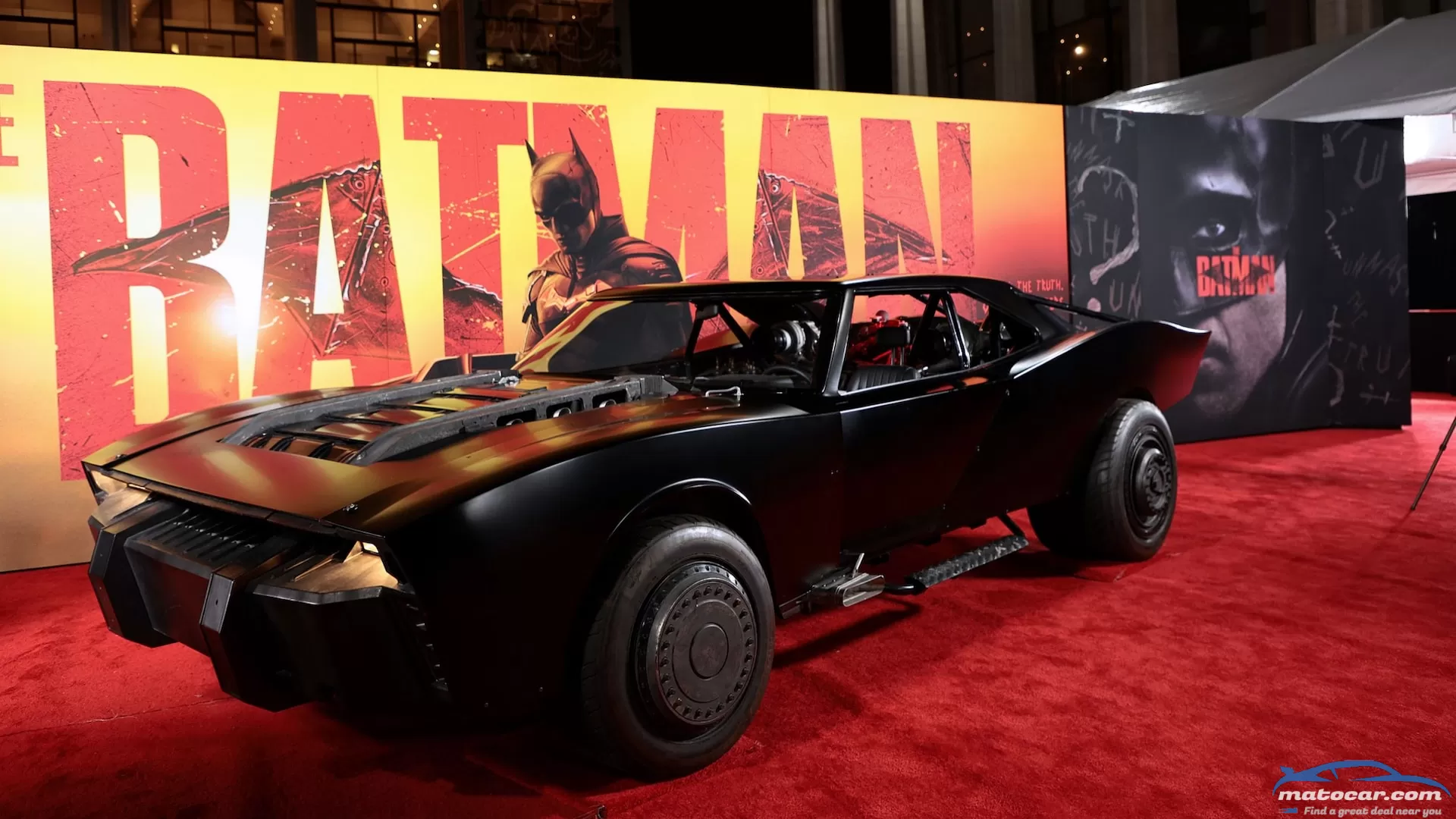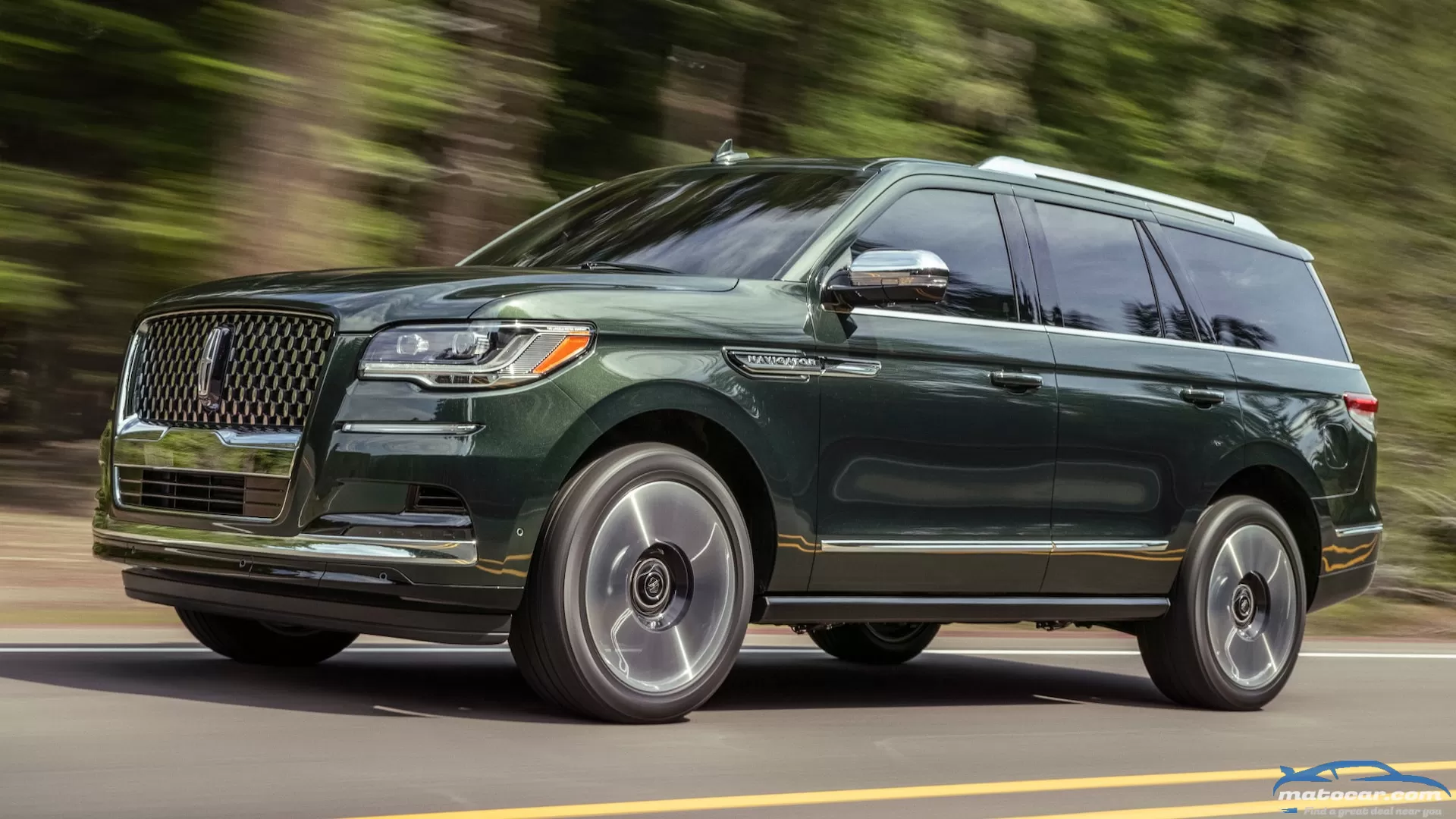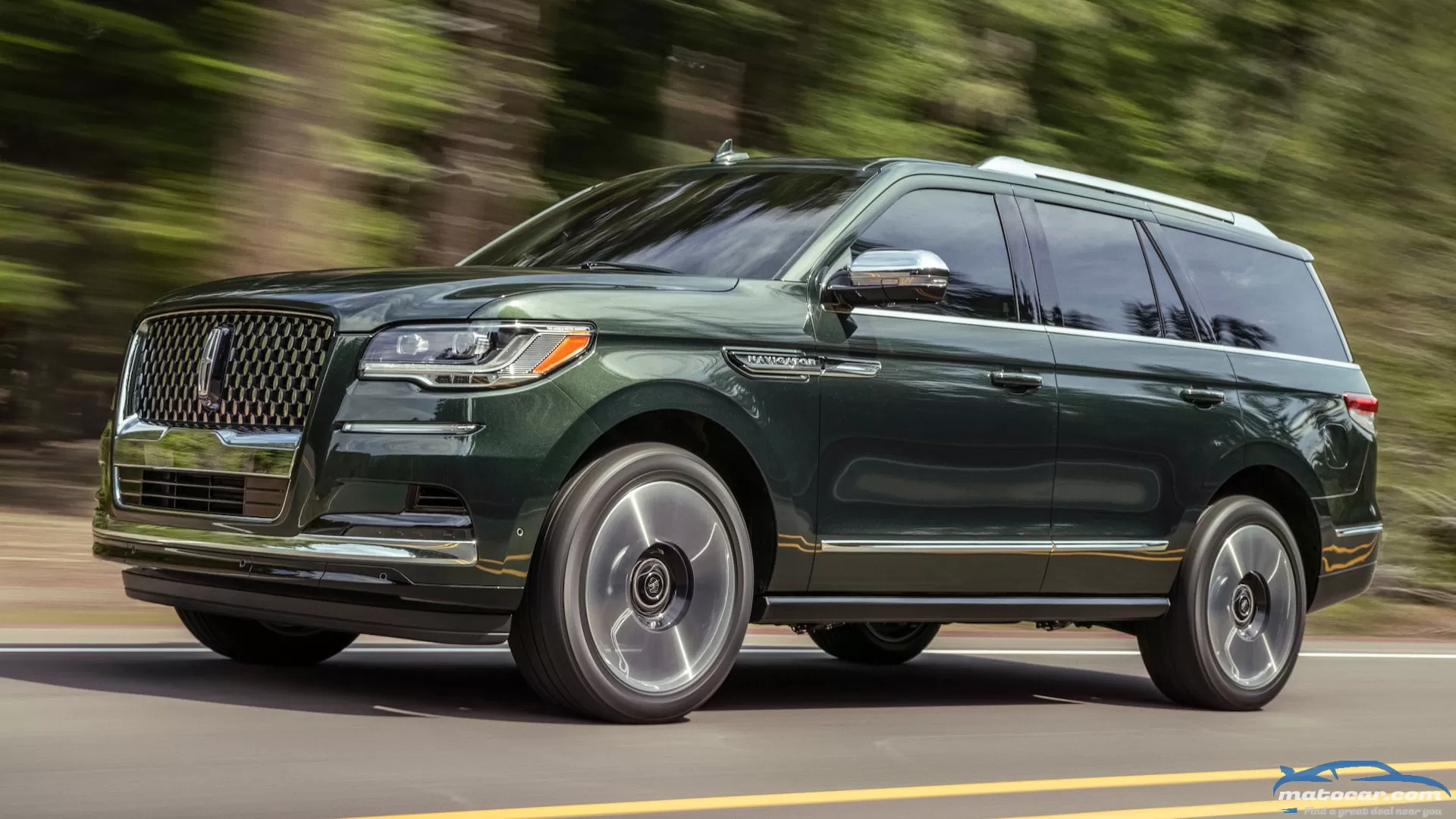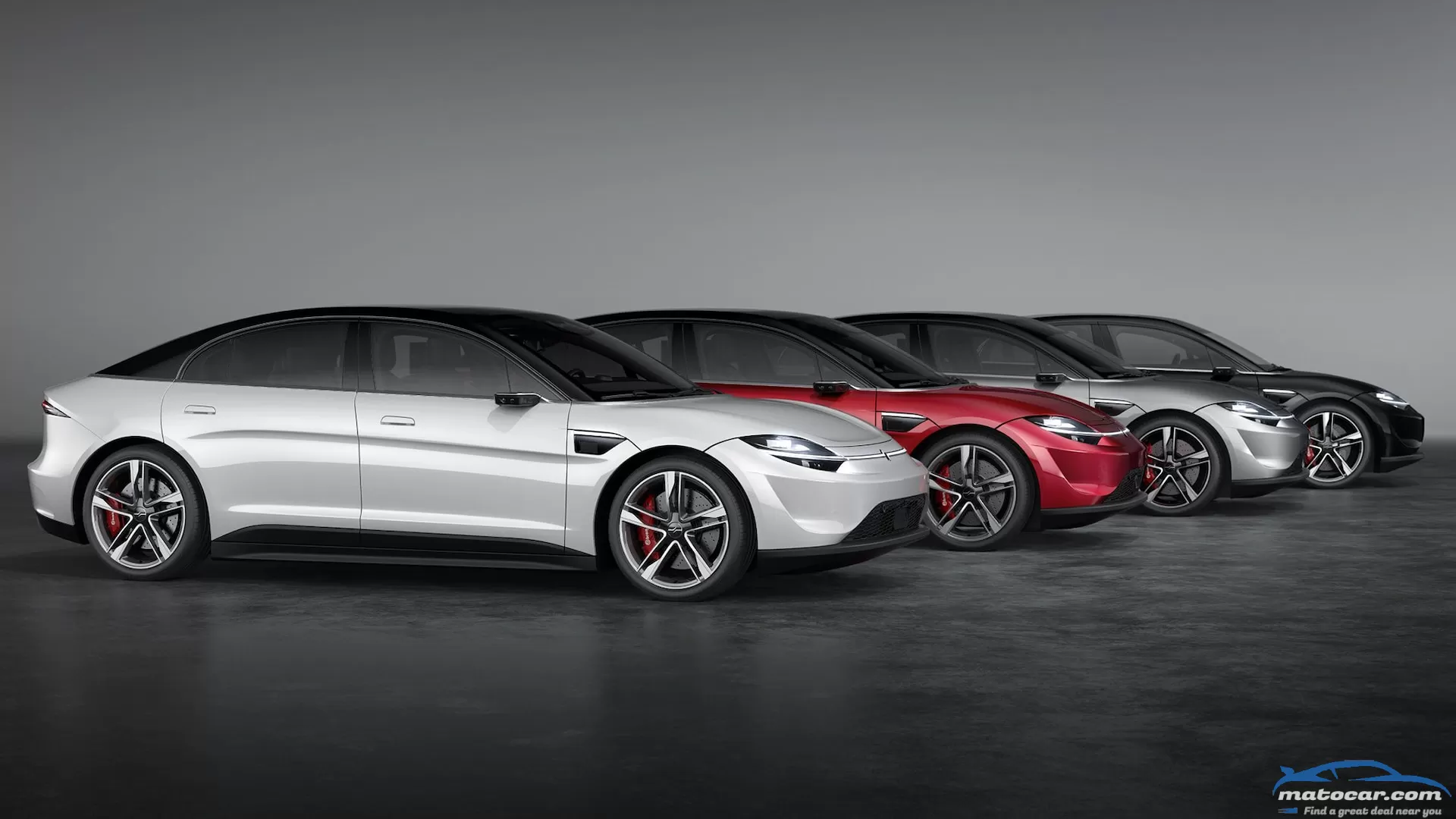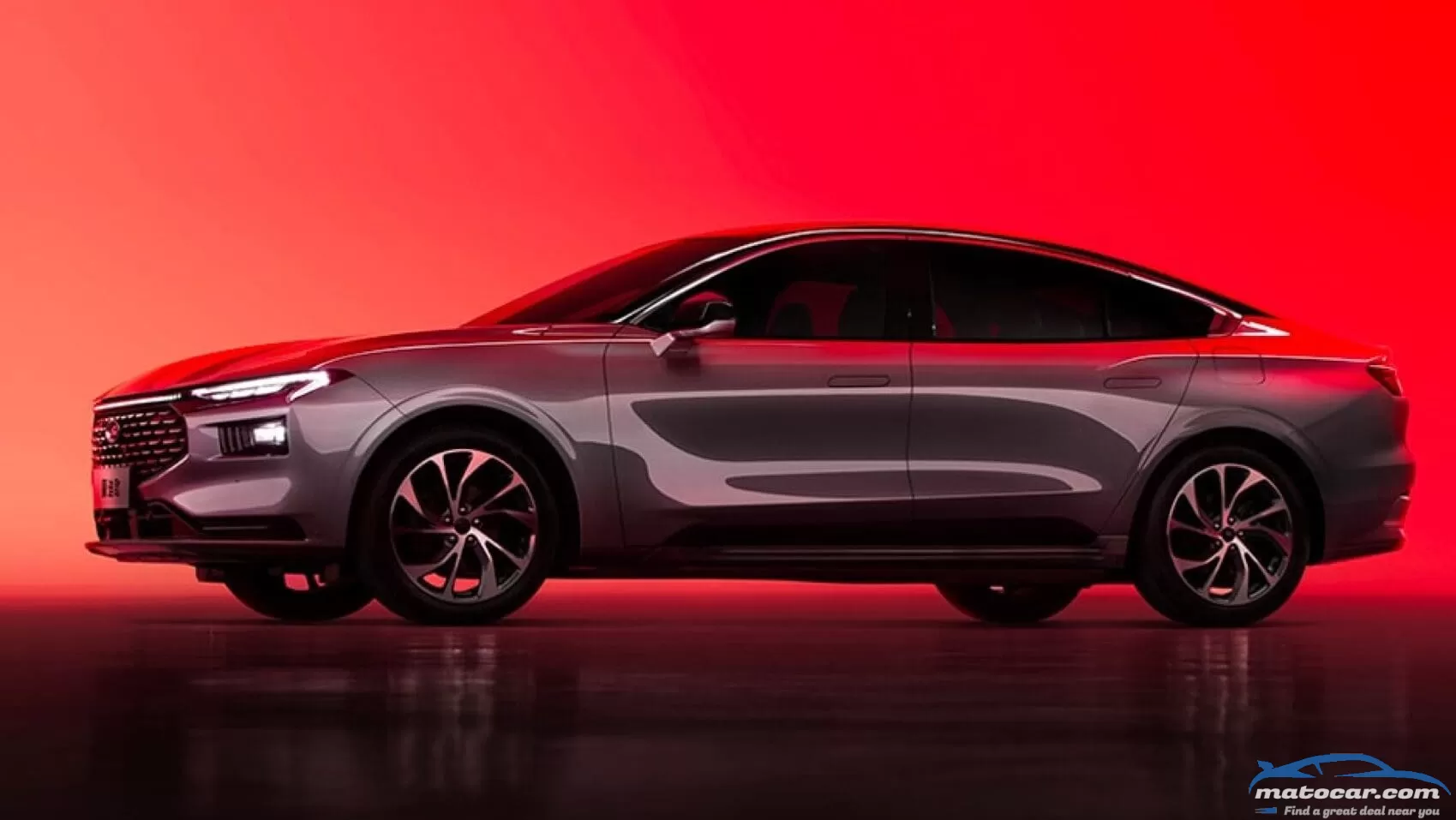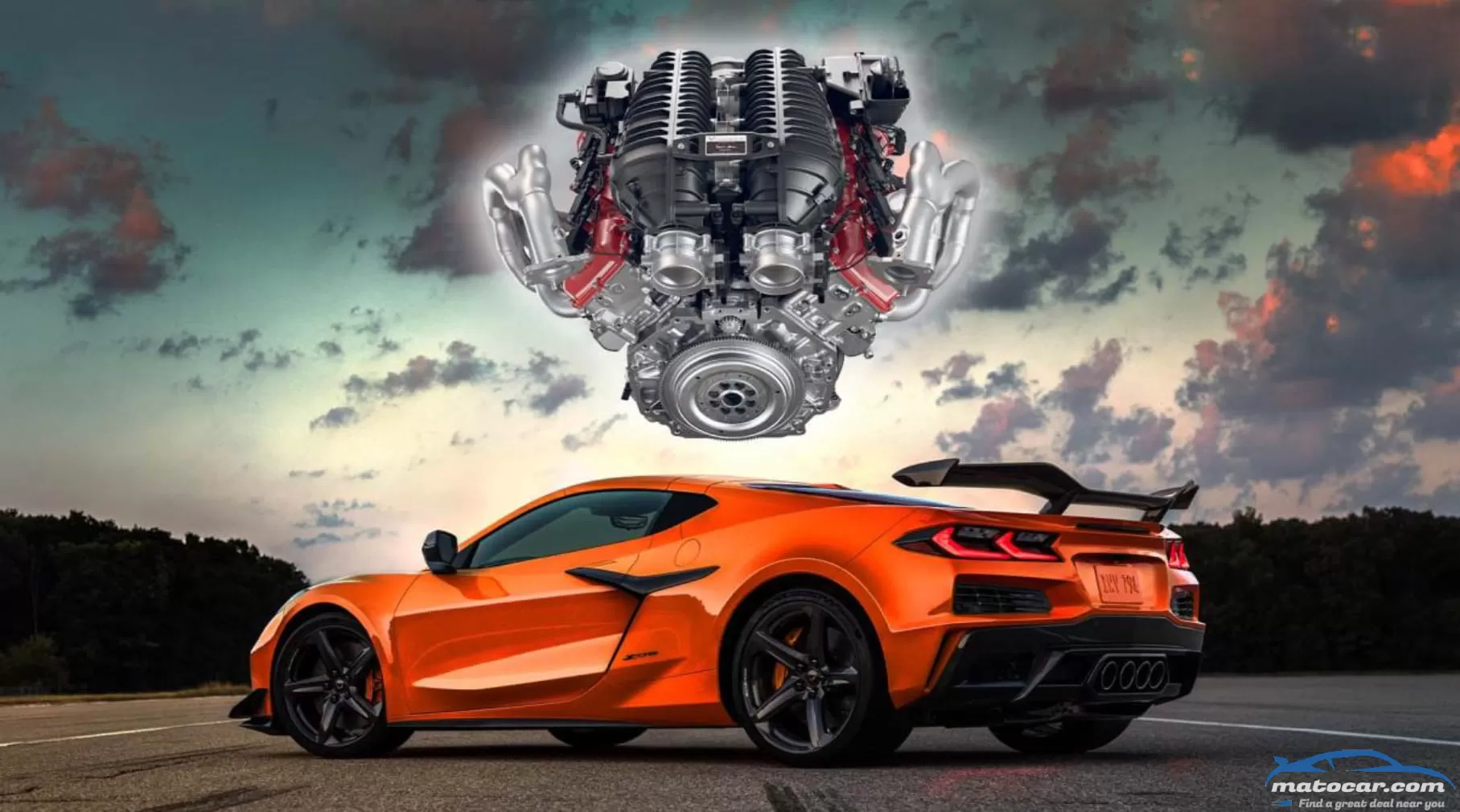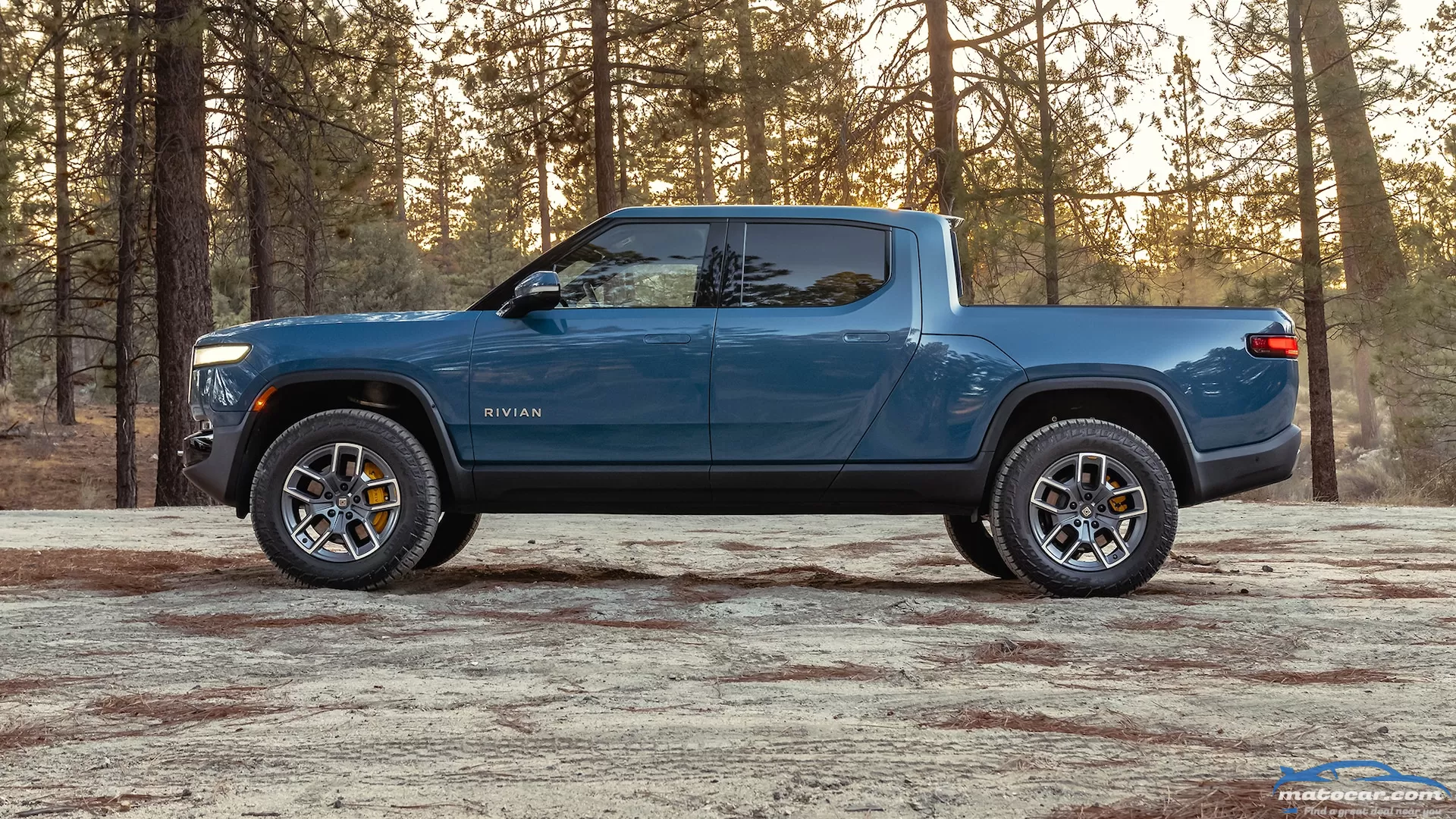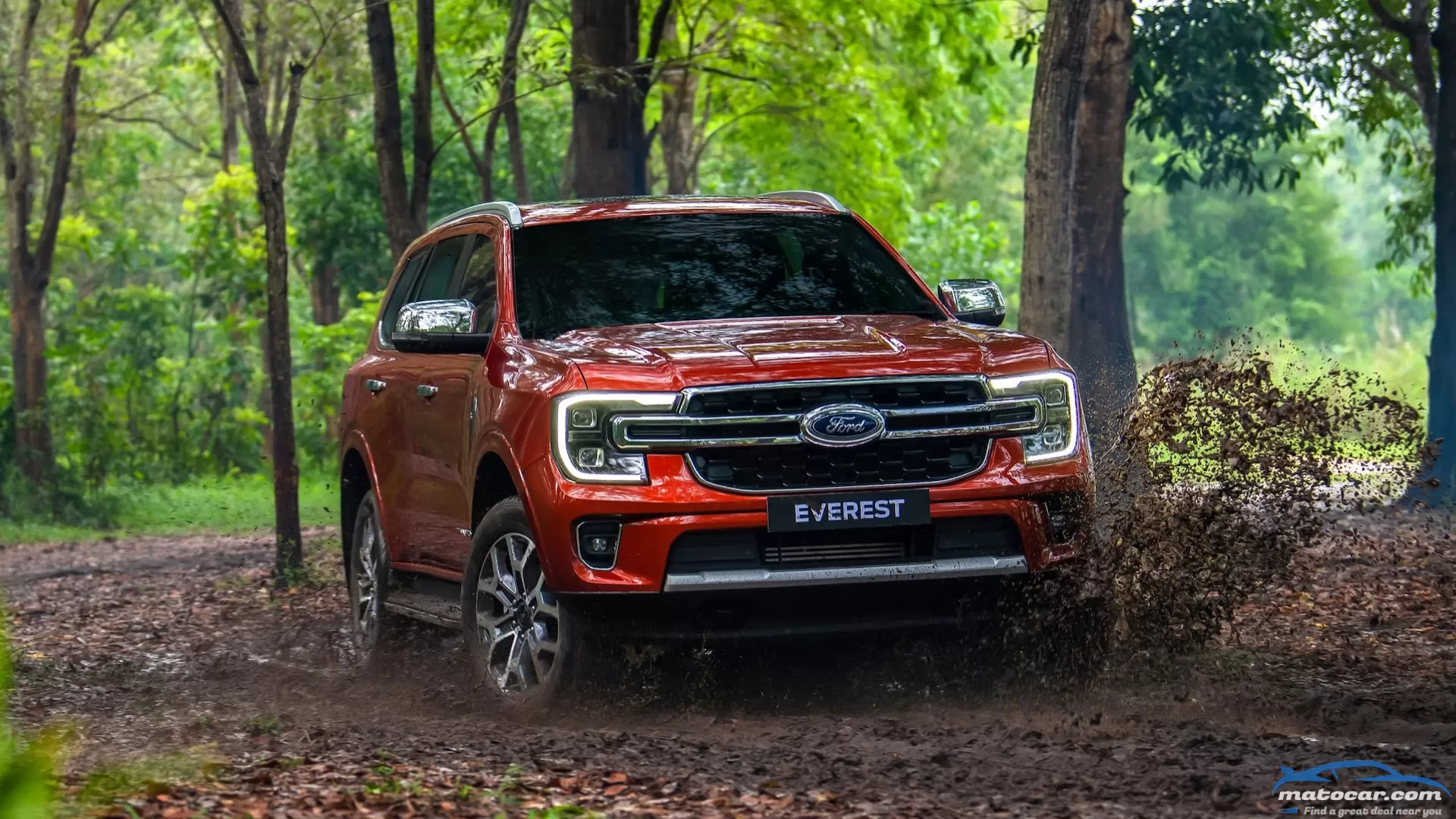Facepalm! Imagine you're eagerly awaiting your new 1,020-hp, $131,190 high-performance electric SUV, and it finally arrives straight out from the factory with ... dangerously mismatched tires? According to twitter user @EZebroni (Ethan Joseph), that really happened. He ordered a Tesla Model X Plaid back in August 2021. After a few estimated delivery date changes, Tesla had finally assigned a vehicle for Ethan to take delivery of in March 2022.Upon the new Tesla's arrival, Ethan did a once-over on his new $131,190 Tesla Model X Plaid and noticed something very odd about the tires. Naturally, he immediately tweeted about it, asking the internet "is it normal for the Plaid X to have two different brands of tires at delivery? Front set are Michelins. Back set are Continentals." Somehow, no one at Tesla caught the mistake before the buyer went to pick up his new vehicle (again, after waiting months for it).Upon looking up the tires on tirerack.com, Ethan noticed the front two are the correct Michelin Latitude Sports 3 UTQG 220 (treadwear) AA (traction) A (temperature) sport summer tires. The rears? An incorrect set of Continental CrossContact LX Sport UTQG 480 A A touring all-season tires. Those are two very different types of tire compounds with drastic differences in grip ability that will vary even more greatly in colder weather, as the summer-spec front tires will harden and deliver less traction than the rears. That's a safety concern, given the potential impact on the vehicle's handling. In warmer weather, the traction issues are inverse, with the less grippy all-seasons in back liable to give up well before the front tires—again, potentially skewing the handling balance.A quick vehicle dynamics lesson: When the rear wheels experience significantly less traction than the fronts, it would be easier to introduce oversteer in a hard corner, even without lifting off the accelerator or suddenly braking (which shifts the vehicle's weight more onto the front tires, unloading the rears). The opposite is the case in cold weather, when the harder front tires will deliver less grip and thus unexpected understeer. Sure, on a skid pad or similar closed course, a little tail-out action is a gas; it's probably less so on public roads and when the driver isn't anticipating it (and, you know, neighboring vehicles, trees, or other objects might be around).Of course, we're talking about limit handling here; this owner's mismatched tires wouldn't exactly be an immediate crash sentence in typical driving, but unexpected transition maneuvers or swerving to avoid a collision, animal in the road, etc. would bring the unusual tire arrangement to the fore. This is why cars are delivered with four matching tires.Some might say "it's not a big deal on an AWD vehicle" to have funky tires, but remember, all-wheel drive can compensate to a certain degree, but only if you're actively accelerating. Under braking and off-throttle cornering, all-wheel drive is simply extra mass to contend with.So, How Did This Tire Snafu Come About?In the era of supply chain constraint, understandably manufacturers may need to use part substitutes to keep producing cars. Given how this change could impact safety, we hope the odd tire fitment was a mistake and not an intentional decision to get a car to a customer with whichever tires were sitting around.Unfortunately for Ethan, the customer-satisfaction issue was not limited to the dangerously mismatched tires. He also discovered some scratches, uneven panels, and black marks on the white seats of his "supposedly directly from Fremont factory new Model X Plaid" as he puts it. Ethan tells MotorTrend that he thinks the car might be a reject from another buyer and was assigned to him afterwards. But a Tesla representative insisted to him the car was shipped directly from the factory after the other buyer failed to schedule delivery three times. Tesla did offer to install the correct Michelin tires on the rear wheels at a later date, since they were out of stock at the time. Ethan stated he's a huge Tesla fanboy. But even his enthusiasm couldn't help him ignore the defects, and so he decided to reject the delivery. Tesla promises it will expedite finding him another one.We wish Ethan the best of luck for his next high performance electric SUV, though his experience does raise questions (many of which have been raised before) about Tesla's quality control efforts. Because after all, new vehicles from all manufacturers occasionally show up at dealerships with odd problems or get damaged during transit. These defects are usually caught by dealerships or service centers, and usually are remedied before the buyer can see the vehicles, or are acknowledged and the car is sold at a lower price. So next time you buy a new car, regardless of which automaker you purchase from, remember to perform a careful inspection before taking delivery. If the dealer or manufacturer agrees to send parts to fix certain problems at a later date, you might consider moving forward anyway, though who knows when the parts will show up in the times of supply constraint.As for the last question lingering on your mind, what will happen to the troubled Model X Ethan didn't accept? Will Tesla fix the issues first or might it simply push the SUV to the next buyer in line? Whatever happens, let's hope it eventually gets a correct set of tires.Photos courtesy of Ethan Joseph
hyundai tucson-plug-in-hybrid Full OverviewWe're slinking silently down a stretch of Southern California's traffic strangled I-405 freeway in the plug-in hybrid version of the 2022 Hyundai Tucson, and for a minute, it's as if we're in an all-electric crossover. But then we hit the go pedal hard to fill a gap in traffic, its turbo-four wakes up, the six-speed automatic downshifts, and we're suddenly back in the world of the internal combustion engine.Such are the trade-offs you'll experience in plug-in hybrids like the Tucson. It's not a bad thing, mind you, just different, though as with all vehicles of this type, it's how you drive them that determines how efficient they'll ultimately be.When you drive the Tucson plug-in hybrid in its all-electric mode (there are three drive modes in all: Automatic, Electric, and Hybrid) and have its 13.8-kWh battery pack topped off, Hyundai says you can eke out as much as 33 miles of electric-only range. Of course, that number will vary, as we found out during our time behind the wheel. But thanks in part to its 7.2-kilowatt onboard charger, if you have a 240-volt Level 2 wall box installed in your garage, Hyundai says you can charge the battery in as little as two hours, so filling it up with electrons at home is relatively quick. Regenerative braking also helps put power back into the battery.As far as the powertrain goes, the company's 1.6-liter turbocharged inline-four with 180 hp and 195 lb-ft of torque is the 2022 Hyundai Tucson plug-in hybrid's gas-powered heart. Add in the power from its 66.9-kW permanent-magnet synchronous motor mounted at the rear axle, and those numbers rise to an estimated 261 horses and 258 lb-ft all in, which is the most any version of the Tucson offers. Power is routed to a six-speed automatic transmission, and all Tucson plug-ins come with Hyundai's HTRAC on-demand (mechanical) all-wheel-drive system as standard equipment.How Well Does the Tucson Plug-In Perform?What does that mean for its overall performance? We took the 2022 Hyundai Tucson plug-in hybrid to the test track to find out. With the battery at 95 percent charge, it launched under EV power at first and then the engine kicked in later in the run, which we clocked at 7.1 seconds from 0 to 60 mph and 15.3 seconds at 92.2 mph through the quarter mile. That's far better than the 2022 Tucson HTRAC we tested with the 2.5-liter inline-four (9.3 seconds), though it was a fair bit off of one of its primary competitors, the 2021 Toyota RAV4 Prime plug-in, which we recorded at an impressive 5.5 seconds to 60 mph. But it did outperform its other main bogey, the 2021 Ford Escape plug-in, which reached the 60-mph mark in 7.7 seconds during our testing.Stopping power of the 2022 Hyundai Tucson PHEV is more than acceptable for a 4,179-pound crossover, with 124 feet required to haul down from 60 mph to 0. That distance essentially splits the difference between the lighter Ford (123 feet) and the heavier Toyota (127 feet). The brakes performed well despite a steeper than normal initial push before they began to bite.But the Tucson plug-in's dynamic performance really brought out the kudos from the MotorTrend test team. Road test director Chris Walton had this to say about the Hyundai midsize crossover after his time wringing it out at the track: "Wow, a much sportier experience than I had anticipated. I found it easy to trail brake into the skidpad, and lateral acceleration registered 0.83 g average. In Sport mode, the steering feels unnecessarily heavy; I prefer the feel of it in other modes. Very mild but predictable understeer on the skidpad, and good acceleration off the corner. It covered the figure-eight course in 27.3 seconds at 0.63 g average. Well done, Hyundai."How Efficient Is the Tucson Plug-In?Although we were surprised by its track performance, when you pit it against its plug-in hybrid crossover competitors in the EPA efficiency arena, the 2022 Hyundai Tucson PHEV brings up the rear. The lighter Ford Escape PHEV carries an EPA-rated 105 mpg-e combined figure, followed by the Toyota RAV4 Prime AWD at 94 mpg-e. The Tucson PHEV AWD checks in at just 80 mpg-e, largely because its six-speed transmission setup is less efficient than the e-CVT setups Ford and Toyota use.There are trade-offs to be sure, another being that today you can only get the Tucson plug-in in the most expensive trim levels like the Limited we tested, and only with all-wheel drive, which guarantees you'll pay more than $40,000 to get into one. On the plus side, you should be able to take advantage of government tax breaks to offset the upcharge.Lots of Good Stuff for the PriceThe good news is that the extra scratch you pay for the Tucson PHEV Limited nets you an impressive-looking package in the cabin with a highly functional 10.3-inch instrument panel featuring screens designed to help you better understand how well you're doing in terms of efficiency, complemented by a 10.3-inch infotainment screen and upscale leather seating. It's also loaded to the gills with safety technology, an advanced stop-and-go adaptive cruise control system, and Hyundai's Smart Park, to name a few.When underway, the Tucson plug-in pulls away from stoplights stealthily yet with authority when you desire a quick pace, and if you want to play a bit, there's a Sport mode with paddles to wind through the six gears. At freeway speeds it happily moves along, and when the road gets rough and rugged, the Tucson plug-in hybrid is more than adept at soaking up imperfections and keeping impact harshness at bay. In essence, it's what you'd expect a family-friendly crossover to deliver in the ride and handling departments.But this vehicle is at its best when you take it easy and use it for what it's meant to do, which is to maximize your opportunities to increase efficiency. Because in the end, plug-in hybrids like the 2022 Hyundai Tucson PHEV are all about using those precious electric-only miles to your advantage.Looks good! More details?2022 Hyundai Tucson Limited HTRAC Plug-In Specifications BASE PRICE $43,945 PRICE AS TESTED $44,140 VEHICLE LAYOUT Front-engine front-motor, AWD, 5-pass, 4-door SUV ENGINE 1.6L direct-injected DOHC 16-valve I-4 plus permanent-magnet electric motor POWER (SAE NET) 180 hp @ 5,500 rpm (gas), 90 hp (elec); 261 hp (est comb) TORQUE (SAE NET) 195 lb-ft @ 1,500 rpm (gas), 224 lb-ft (elec); 258 lb-ft (est comb) TRANSMISSION 6-speed automatic CURB WEIGHT (F/R DIST) 4,179 lb (59/41%) WHEELBASE 108.5 in LENGTH x WIDTH x HEIGHT 182.3 x 73.4 x 65.6 in 0-60 MPH 7.1 sec QUARTER MILE 15.3 sec @ 92.2 mph BRAKING, 60-0 MPH 124 ft LATERAL ACCELERATION 0.83 g (avg) MT FIGURE EIGHT 27.3 sec @ 0.63 g (avg) EPA CITY/HWY/COMB FUEL ECON 35/35/35 mpg (gas), 87/74/80 mpg-e* EPA RANGE, COMB 420 mi* ON SALE Now *EPA blended-PHEV (charge-depleting) mode testing, with vehicles set to their default drive and brake-regeneration modes. Show All
UPDATE 3/4/22: "The Batman" is now in theaters, racking up a respectable 85 percent fresh rating on Rotten Tomatoes and appearing to be on a trajectory to cash in at the box office. But, for our purposes, the star of the movie isn't Robert Pattinson—its the muscular Batmobile, with its mid-mounted engine and an overall vibe that wouldn't be too out of place in a Mad Max film. And, like any good Batmobile, it seems to be a central part of the film, speeding through a Gotham City that's as dark and moody as ever, launching baddies' vehicles into the air to land with an explosive thud. Whet your appetite with a longer, more recent trailer below. "The Batman" opens today in theaters, and will hit the HBO Max streaming service in mid-April. The Batman director Matt Reeves just revealed the new Batmobile on Twitter, and it's a definite departure from past movie cars. The movie press had earlier heard rumors that the new Batmobile would be more of a muscle car than the military-inspired Tumbler that appeared in Christopher Nolan's Dark Knight film trilogy. That is exactly what we have here, although the mid-mounted engine is a bit of a surprise.What we can see resembles a lot of different classic muscle cars, and that's probably intentional. The deeply recessed front headlamps have a generic late 1960s look to them: a bit of Mopar, a bit of Mustang, maybe even a hint of De Tomaso Mangusta. Extremely swoopy rear fenders with pointed trailing ends that hang over three-element taillights are the closest thing we get to a traditional Batmobile motif. The rear tubes of a roll cage poke through the C-pillars and trailing edges of the roof. It is likely completely custom bodywork over a tube frame or donor chassis, so there's probably not a single recognizable base underpinning this creation.The longitudinally-mounted engine aft of the cabin is an enigma, but an awesome one. It appears to be a V-10—an OHV unit—with a couple of immense turbochargers that dump straight into the atmosphere behind the roof. If the movie magic gods are kind, it'll spit two tongues of delicious fire with every throttle blip. This Batmobile will be neither inconspicuous or quiet. There's obviously some extraneous fantasy bits tacked on to make it look more futuristic, but it seems like a real motor under there.Remember, there are usually several movie cars built for various purposes: stunt cars that can take a jump without disintegrating, "hero" cars that look good in close-ups, a rig that makes it look like our new Batman (Robert Pattinson—yes, that guy, from the sparkly vampire movies) is actually driving it even though it's grafted to the front of some other vehicle. This is probably a "hero" car, so the wild-looking engine might not be what motivates the running/driving ones.Even so, the Mad Max meets Fast and Furious vibe this new Batmobile gives off is a solid hint that this will be a movie that appeals to car enthusiasts on a deeper level. This reboot, the umpteenth since the 1989 Tim Burton movie, focuses on a more youthful Bruce Wayne/Batman with a greater focus on his detective work. There's surely going to be a lot of fighting, and given the unique direction that this Batmobile's design takes, we hope that there will be a lot of driving, too.Update: This post, which originally published on March 4, 2020, has been updated with the latest trailer for "The Batman".
lincoln navigator Full OverviewThe Lincoln Navigator is well established among ginormous three-row luxury SUVs, having initiated the full-size segment some 25 years ago. The latest iteration of the Navigator made its debut for the 2018 model year and has been refreshed for 2022 with updated styling and some new technology. We usually welcome changes like these, but in the case of the 2022 Navigator at least one addition isn't, er, particularly great.ActiveGuide Is New but Has FlawsLet's dive right into the trouble: The headline technology for the updated Navigator is Lincoln's ActiveGlide semi-autonomous driving technology, effectively an adaptive cruise control and lane centering system that allows drivers to take their hands off the steering wheel on certain pre-mapped roads, the ever-expanding database of which will be beamed to Lincolns through over-the-air updates. (ActiveGlide is effectively a rebadged version of the BlueCruise system used in the parent company's Ford-branded vehicles. Lincoln offers it free for the first three years before owners need to subscribe.)Like all hands-free systems, in order to let you take your hands off the wheel, ActiveGlide needs to be able to detect that you are watching the road. To do this, the Navigator employs cameras atop the steering column that detect head and eye movements. If the system senses that the driver's eyes are off the road, it sounds repeated aural warnings before canceling lane guidance.We are intimately familiar with this sequence of events because we experienced it repeatedly—not because we weren't watching where we were going, but because we forgot to bring sunglasses to the press preview. Turns out that if you squint, ActiveGlide loses track of your eyes and thinks you aren't looking at the road. It also turns out that if a short driver doesn't position the steering column low enough, the steering wheel hub partially blocks the camera, generating more false alarms."Watch the Road"? We Are Watching the Road!We experienced ActiveGlide's full automation on Phoenix's 202 loop freeway and found it worked beautifully—right up until the road curved west into the afternoon sun, when it started shouting warnings to our squinting selves. (Interestingly enough, when the Navigator came to a section where it couldn't steer itself and needed the driver to put hands back on the wheel, the warnings were silent.)Now, we'd normally dismiss this as not such a big deal if it only affected hands-free driving, but there is a major caveat here: The face-recognition camera is also required for the normal lane centering function. So even when we weren't letting the Lincoln do the driving—so, when we were on non-ActiveGlide-mapped roads and turned on cruise control and lane guidance, with our hands firmly on the wheel—the Navigator continued to yell at us to watch the road, even though we were.This annoyance is piled on top of another one: Like most vehicles, when lane centering is engaged, the Navigator sounds a warning if it believes you've taken your hands off the wheel. Instead of a capacitive touch sensor, Lincoln uses the cheaper torque sensor, which detects inputs on the steering wheel. The problem—which we've experienced on other vehicles as well—is that on long straightaways, which require no steering, the Navigator yells at you to put your hands on the wheel even when they are already there. This is the reason why the Cadillac Escalade, equipped with GM's competing Super Cruise system, invested in the pricier touch sensors. Lincoln could do better for its top-of-the-line vehicle—after all, it's not like it's selling these full-sizers at razor-thin profit margins.Were these isolated incidents or due to a malfunctioning vehicle? We don't think so. We drove two different Navigators, and both exhibited the same behavior. Furthermore, other staffers have experienced these issues with the BlueCruise-branded version of the system in Ford vehicles. However, aside from the bedeviled lane-centering system, we found lots to like in the face-lifted Navigator.The Actual Improvements to the 2022 Lincoln NavigatorThere are other changes to the '22 Navigator, and some are genuine improvements, like the styling. The 2022 model has thinner headlights, a bolder grille, and better taillights, i.e., ones that no longer look like they've been installed upside down. There's a new Central Park Edition available with a dark green interior that looks in person better than it sounds on paper, as well as the blue-upholstered Yacht Club version. (Is this a return to the 1970s, when you could get your car's interior done up in colors other than black and beige? Gosh, we hope so.)The newly expanded 13.2-inch center screen, which runs Ford's Sync 4 system, is intuitive and easy to use, and the optional premium sound system is nothing short of spectacular. We also remain fascinated by Lincoln's 30-way power front seats, though we're not convinced they're a great idea. Automakers pay ergonomic experts to craft seats that are supportive and comfortable, with a few simple adjustments so we can tweak them to our needs. Lincoln's 30-way seats make, well, the occupants into the experts. Except most people aren't orthopedic spine physicians, and they will have the same trouble we do molding the seats into a perfect position. Perhaps there is such a thing as too many choices. Lincoln, how about a few ergonomically optimized presets that we can then fine-tune?The Best Seats Are the Rear SeatsWe had a much better time in the back seat (stop giggling, you children). Before our drive, we were chauffeured around in a Navigator equipped with Lincoln's new-for-'22 rear-seat entertainment system, which now incorporates Amazon Fire TV. Two of us streamed two separate programs from Amazon Prime (the system also does Netflix and Disney Plus), all while enjoying the class-exclusive massaging rear seats. (OK, so maybe there isn't such a thing as too many choices.) It was a far more enjoyable experience than being yelled at by the lane-centering system.The 2022 Lincoln Navigator also gets the latest version of Ford's Pro Trailer Assist system, which lets you steer a trailer in reverse via a knob on the dash. Programming is now easier than ever: No separate transponder is needed (as on the Ford F-150), just a checkerboard sticker on the trailer that Ford devotees will recognize from the system's first generation. In addition, no measuring is required to set up the system as with the original sticker-based system. Drive a calibration pattern, and the cameras do all the measuring for you. We're pleased to see this in the Navigator; its ability to tow up to 8,700 pounds—more than half a ton better than the Escalade—is a compelling reason to buy it.Likable, But Still Needs to Be BetterIn all other respects, the 2022 Navigator is basically the gentle giant we've come to know and love enough to make it our top-ranked full-size luxury SUV. It has authoritative power from the 440-hp 3.5-liter twin-turbo V-6, a smooth-shifting 10-speed transmission, and a somewhat noisier, choppier ride than you might expect from Lincoln's flagship. And, of course, the Navigator is woefully inefficient—count on fuel economy numbers in the mid-teens. Lincoln tells us it has no plans to add a hybrid powertrain because gas mileage is not high on the priority list of the Navigator's target buyer.Hopefully said buyer is willing to deal with the driver-assistance foibles, too. Lincoln could dramatically mitigate the Navigator's problem by disabling the face cameras for hands-on lane centering, but it would be better still if the brand invested more in the engineering of the system. ActiveGlide's current functionality is enough to give us major pause, and that's really a shame—among big SUVs, the Lincoln has a lot to offer. Let's hope Lincoln sees the wisdom in investing in a rapid update to this update.Looks good! More details?2022 Lincoln Navigator Specifications BASE PRICE $78,405-$107,720 LAYOUT Front-engine, RWD/4WD, 7-8-pass, 4-door SUV ENGINE 3.5L/440-hp/510-lb-ft twin-turbo direct-injected DOHC 24-valve V-6 TRANSMISSION 10-speed auto CURB WEIGHT 5,700-6,050 lb (mfr) WHEELBASE 122.5-131.6 in L x W x H 210.0-221.9 x 79.9 x 76.1-76.4 in 0-60 MPH 5.9 sec (MT est) EPA FUEL ECON, CITY/HWY/COMB 16-17/22-23/18-19 mpg EPA RANGE, COMB 414-513 miles ON SALE Now Show All
lincoln navigator Full OverviewThe Lincoln Navigator is well established among ginormous three-row luxury SUVs, having initiated the full-size segment some 25 years ago. The latest iteration of the Navigator made its debut for the 2018 model year and has been refreshed for 2022 with updated styling and some new technology. We usually welcome changes like these, but in the case of the 2022 Navigator at least one addition isn't, er, particularly great.ActiveGuide Is New but Has FlawsLet's dive right into the trouble: The headline technology for the updated Navigator is Lincoln's ActiveGlide semi-autonomous driving technology, effectively an adaptive cruise control and lane centering system that allows drivers to take their hands off the steering wheel on certain pre-mapped roads, the ever-expanding database of which will be beamed to Lincolns through over-the-air updates. (ActiveGlide is effectively a rebadged version of the BlueCruise system used in the parent company's Ford-branded vehicles. Lincoln offers it free for the first three years before owners need to subscribe.)Like all hands-free systems, in order to let you take your hands off the wheel, ActiveGlide needs to be able to detect that you are watching the road. To do this, the Navigator employs cameras atop the steering column that detect head and eye movements. If the system senses that the driver's eyes are off the road, it sounds repeated aural warnings before canceling lane guidance.We are intimately familiar with this sequence of events because we experienced it repeatedly—not because we weren't watching where we were going, but because we forgot to bring sunglasses to the press preview. Turns out that if you squint, ActiveGlide loses track of your eyes and thinks you aren't looking at the road. It also turns out that if a short driver doesn't position the steering column low enough, the steering wheel hub partially blocks the camera, generating more false alarms."Watch the Road"? We Are Watching the Road!We experienced ActiveGlide's full automation on Phoenix's 202 loop freeway and found it worked beautifully—right up until the road curved west into the afternoon sun, when it started shouting warnings to our squinting selves. (Interestingly enough, when the Navigator came to a section where it couldn't steer itself and needed the driver to put hands back on the wheel, the warnings were silent.)Now, we'd normally dismiss this as not such a big deal if it only affected hands-free driving, but there is a major caveat here: The face-recognition camera is also required for the normal lane centering function. So even when we weren't letting the Lincoln do the driving—so, when we were on non-ActiveGlide-mapped roads and turned on cruise control and lane guidance, with our hands firmly on the wheel—the Navigator continued to yell at us to watch the road, even though we were.This annoyance is piled on top of another one: Like most vehicles, when lane centering is engaged, the Navigator sounds a warning if it believes you've taken your hands off the wheel. Instead of a capacitive touch sensor, Lincoln uses the cheaper torque sensor, which detects inputs on the steering wheel. The problem—which we've experienced on other vehicles as well—is that on long straightaways, which require no steering, the Navigator yells at you to put your hands on the wheel even when they are already there. This is the reason why the Cadillac Escalade, equipped with GM's competing Super Cruise system, invested in the pricier touch sensors. Lincoln could do better for its top-of-the-line vehicle—after all, it's not like it's selling these full-sizers at razor-thin profit margins.Were these isolated incidents or due to a malfunctioning vehicle? We don't think so. We drove two different Navigators, and both exhibited the same behavior. Furthermore, other staffers have experienced these issues with the BlueCruise-branded version of the system in Ford vehicles. However, aside from the bedeviled lane-centering system, we found lots to like in the face-lifted Navigator.The Actual Improvements to the 2022 Lincoln NavigatorThere are other changes to the '22 Navigator, and some are genuine improvements, like the styling. The 2022 model has thinner headlights, a bolder grille, and better taillights, i.e., ones that no longer look like they've been installed upside down. There's a new Central Park Edition available with a dark green interior that looks in person better than it sounds on paper, as well as the blue-upholstered Yacht Club version. (Is this a return to the 1970s, when you could get your car's interior done up in colors other than black and beige? Gosh, we hope so.)The newly expanded 13.2-inch center screen, which runs Ford's Sync 4 system, is intuitive and easy to use, and the optional premium sound system is nothing short of spectacular. We also remain fascinated by Lincoln's 30-way power front seats, though we're not convinced they're a great idea. Automakers pay ergonomic experts to craft seats that are supportive and comfortable, with a few simple adjustments so we can tweak them to our needs. Lincoln's 30-way seats make, well, the occupants into the experts. Except most people aren't orthopedic spine physicians, and they will have the same trouble we do molding the seats into a perfect position. Perhaps there is such a thing as too many choices. Lincoln, how about a few ergonomically optimized presets that we can then fine-tune?The Best Seats Are the Rear SeatsWe had a much better time in the back seat (stop giggling, you children). Before our drive, we were chauffeured around in a Navigator equipped with Lincoln's new-for-'22 rear-seat entertainment system, which now incorporates Amazon Fire TV. Two of us streamed two separate programs from Amazon Prime (the system also does Netflix and Disney Plus), all while enjoying the class-exclusive massaging rear seats. (OK, so maybe there isn't such a thing as too many choices.) It was a far more enjoyable experience than being yelled at by the lane-centering system.The 2022 Lincoln Navigator also gets the latest version of Ford's Pro Trailer Assist system, which lets you steer a trailer in reverse via a knob on the dash. Programming is now easier than ever: No separate transponder is needed (as on the Ford F-150), just a checkerboard sticker on the trailer that Ford devotees will recognize from the system's first generation. In addition, no measuring is required to set up the system as with the original sticker-based system. Drive a calibration pattern, and the cameras do all the measuring for you. We're pleased to see this in the Navigator; its ability to tow up to 8,700 pounds—more than half a ton better than the Escalade—is a compelling reason to buy it.Likable, But Still Needs to Be BetterIn all other respects, the 2022 Navigator is basically the gentle giant we've come to know and love enough to make it our top-ranked full-size luxury SUV. It has authoritative power from the 440-hp 3.5-liter twin-turbo V-6, a smooth-shifting 10-speed transmission, and a somewhat noisier, choppier ride than you might expect from Lincoln's flagship. And, of course, the Navigator is woefully inefficient—count on fuel economy numbers in the mid-teens. Lincoln tells us it has no plans to add a hybrid powertrain because gas mileage is not high on the priority list of the Navigator's target buyer.Hopefully said buyer is willing to deal with the driver-assistance foibles, too. Lincoln could dramatically mitigate the Navigator's problem by disabling the face cameras for hands-on lane centering, but it would be better still if the brand invested more in the engineering of the system. ActiveGlide's current functionality is enough to give us major pause, and that's really a shame—among big SUVs, the Lincoln has a lot to offer. Let's hope Lincoln sees the wisdom in investing in a rapid update to this update.Looks good! More details?2022 Lincoln Navigator Specifications BASE PRICE $78,405-$107,720 LAYOUT Front-engine, RWD/4WD, 7-8-pass, 4-door SUV ENGINE 3.5L/440-hp/510-lb-ft twin-turbo direct-injected DOHC 24-valve V-6 TRANSMISSION 10-speed auto CURB WEIGHT 5,700-6,050 lb (mfr) WHEELBASE 122.5-131.6 in L x W x H 210.0-221.9 x 79.9 x 76.1-76.4 in 0-60 MPH 5.9 sec (MT est) EPA FUEL ECON, CITY/HWY/COMB 16-17/22-23/18-19 mpg EPA RANGE, COMB 414-513 miles ON SALE Now Show All
Honda will build an electric car developed by Sony by 2025. Before you make any Sony Driveman jokes—get it, like the brand's iconic Walkman music player?—this is huge news for an industry that's had a hit-and-miss relationship with the tech sector so far.Sony has been sending clear signals that it intends to build electric vehicles, even showing off concept versions of the Vision-S 01 sedan and Vision-S 02 SUV recently. But Sony has no infrastructure for or experience in building cars—and company execs admit it, though Sony also said as recently as last year that it has no plans to produce any car.Sony won't be physically building any cars at all, at least not at first, so previous statements about not building any cars weren't totally wrong. Instead, per a joint announcement from Sony and Honda, the latter will build a car for the tech giant as part of a new joint venture getting off the ground this year, dubbed simply "New Company" in the announcement.The agreement stipulates that the two companies "plan to engage in the joint development and sales of high value-added battery electric vehicles (EVs) and commercialize them in conjunction with providing mobility services."The joint venture aims to leverage Honda's experiences building cars, sales know-how (and, presumably, its sales networks), supply chains, etc.—you know, car company stuff—with Sony's "development and application of imaging, sensing, telecommunication, network, and entertainment technologies."The new vehicle will be co-developed by Honda and Sony via this New Company, which will "plan, design, develop, and sell the EVs, but not own and operate manufacturing facilities," with that final distinction being key.Honda will be building the cars at its existing manufacturing facilities, at least for the initial new vehicle being launched in 2025. It is noted that Sony is expected to furnish a new "mobility service platform" for the cars as well, which we take to mean some kind of sweet infotainment package bundled with driver assistance technology.There is no mention of how the agreement impacts Honda's future in-house EV plans (which involve, among other things, utilizing General Motors to produce an electric SUV using that brand's Ultium EV platform), or whether this New Company will carry a more original and marketable name. We know now only that it is natural that a tech giant such as Sony would get hitched to an established automaker to make its, ahem, Vision cars a reality, and we look forward to seeing where this joint venture goes.
The Ford Mustang is the last car the brand has left standing in North America—and it's a coupe—but elsewhere, traditional four-door, three-box designs still hold some sway. Take the Chinese market, where a few of Ford sedans are currently on the menu: the Focus (which mainly looks like a ROW Focus) and the Escort (based on the second-generation Ford Focus). The new Mondeo, though, is another thing entirely—a refinement of some of Ford's greatest hits. 2022 Ford Mondeo DesignFord revealed this car back in January, but it didn't strike us then just how bold this vehicle is until reports started coming in about it starting to reach dealerships in China. After a second glance, it's worth showing to our readers, if only to appreciate what could have been. In another timeline, had the Fusion (our version of the once-global Mondeo) hung on another generation, we're sure it would have carried this design language. It's like a greatest hits collection of all the best styling ideas of the last few generations of Fords, but honed to a very fine point.Mondeo Meets MuscleThe headlights and grille look more Taurus than Fusion, but more handsome and aggressive than either, using the high-mounted running lights and separated, prominent driving lights below to give it a very contemporary fascia. We're not sure that anyone at Ford Design in China had a rival Camaro up on their idea board, but the blending of the running lights into the grille, and the separate lower elements in black separated by a body-colored strip almost seem like a successful riff on the widely panned Camaro front end. More grille up top and less below the strip does wonders to the balance of the front end. It's in profile, and from the rear, that the Chinese-market Mondeo really comes into its own. There's lots of contour, contrast, and character to the flanks of the Mondeo, particularly the very rear-drive-influenced character line high on the rear quarters. The contrasting roof makes the Mondeo look even sleeker than it actually is. And the shapely rear end, with a strong Mustang influence that marries quadrangular elements with a classic fastback lip spoiler shape to the trunklid, is superb. Without the twin integrated exhaust pipes flanking a faux rear diffuser, this could sell as a very successful Ford EV concept.Mustang Mixed InThe taillamps are particularly noteworthy, with a hint of the trendy pixelated style, similar to what we see on the Hyundai Ioniq 5, but used sparingly enough to add visual interest rather than take over the rear end as an overarching theme. The small, tasteful, and very three-dimensional vertical strakes on the taillamps also are a nod in the direction of the Mustang.Inside, a massive panel of screens floats over a restrained dash, with plenty of character—particularly in the shapely and visually interesting steering wheel. While the dash overall has significant height—we'd need to sit in one to really evaluate how the cabin feels—it looks suitably futuristic.Will the Chinese Mondeo's massive screen, muscular design language, or three-box shape cross the Pacific anytime soon? The first two are possibilities, the third seems highly unlikely. It would seem Ford doesn't yet consider any of its sedans as "Icons." In the meantime, consider the Mondeo a taste of what might have been.
Late last year, we spent a couple hours peppering GM engineers with questions during a development drive of the 2023 Chevrolet Corvette Z06, then we interviewed a different set of engineers during a photo shoot of the car and its LT6 engine. Now Chevy has presented a 3.5-hour deep-dive webinar divulging even more of the enabling race-inspired technology behind the world's most potent naturally aspirated production-car engine. We've done our best to boil it down to 23 slides crammed full of the most essential knowledge—nuggets you'll need to explain to your pals at the pub why America's supercar has earned a place as one of history's greatest combustion-powered sports cars.
Update March 3, 2022: After just of a day of angry tweets, irate Reddit threads, and order cancellations stemming from price hikes on the original quad-motor Rivian R1S and R1Ts, electric vehicle startup Rivian is reportedly backing off on increasing the price of its electric pickup and SUV for existing reservation holders. "Earlier this week, we announced pricing increases that broke the trust we have worked to build with you," Rivian CEO RJ Scaringe said in a letter to reservation holders and shared with the media, "We wrongly decided to make these changes apply to all future deliveries, including pre-existing configured preorders. We failed to appreciate how you viewed your configuration as price locked. "For anyone with a Rivian preorder as of the March 1 pricing announcement, your original configured price will be honored. If you canceled your preorder on or after March 1 and would like to reinstate it, we will restore your original configuration, pricing and delivery timing. Our team will be sending an email in the next few days with more details"For those who haven't yet plunked down a refundable $1,000 deposit on a Rivian R1S or R1T, the new pricing structure for dual- and quad-motor R1s detailed below applies. If you're one of the thousands who've pre-ordered or are interested in purchasing the 2022 MotorTrend Truck of the Year (not to mention the only electric vehicle to cross the Trans-America Trail), the Rivian R1T pickup, and its SUV sibling, the R1S, we have some mixed news. The good news is that the company is expanding its R1T and R1S lineup, now offering dual-motor variants and a new battery pack. The bad news is that it's going to cost more for less Rivian, as quad-motor prices rise to make room for the new two-motor versions of the R1T and R1S, which will cost the same as the entry-level quad-motors did before—at least for those who lack an existing reservation, per the update above.New Homebuilt MotorsAs we long suspected, Rivian-built dual-motor variants are now slated to join the R1 lineup. Available starting in 2024, these new Rivian designed, engineered, and built motors (one installed at each axle) are said to be good for over 600 hp and 600 lb-ft of torque, and Rivian promises a 4.0-second 0-60 mph time, making the dual motor R1T about a second slower to 60 mph than the quickest four-motor R1T we've tested. Current quad-motor Rivians produce 835 hp and 908 lb-ft of torque.Rivian also says that its new motors are simpler, lighter, and cheaper to build than the supplier-sourced motors on today's R1S and R1T.The California-based automaker isn't publicly committing to utilizing its new motors on the quad-motor R1S and R1T, but sources at the company have told us that Rivian is currently hard at work on a quad-motor R1X super SUV that makes 1,200 hp and 1,200 lb-ft. We're not math experts, but we're fairly certain that if you put four of Rivian's new motors together, the output would add up to 1,200 ponies and pound-feet.We suspect that in addition to the R1X, a detuned quad-motor R1S and R1T featuring the new motors is in the cards given CEO RJ Scaringe's desire to bring core competencies in-house.Rivian's new battery packIn addition to the new twin-motor models, Rivian today announced its new Standard battery pack will go on sale in 2024. Available only on dual-motor R1S' and R1Ts, the Standard pack joins the Large pack (on-sale now), and Max pack (slated for 2023). Dual motor R1s will be able to travel about 260 miles on a charge with the Standard pack, 320 miles with the Large pack, and over 400 miles with the Max pack, all pending EPA certification.Quad-motor R1Ts will continue to be available with only the Large and Max packs. The Large pack is the only one currently available; it nets the R1S an EPA-estimated range of 316 miles and R1T 314 miles.Price increases for the R1Although Rivian is keen to point out that base prices for the R1T and R1S remain unchanged at $68,575 and $73,575, respectively, that's a bit disingenuous, as the dual motor, standard pack is the new base configuration for the R1 line. Previously, those prices applied to quad-motor, Large pack models.Those quad-motor prices rise from $68,575 for a Large pack R1T Explore model to $80,575, and from $73,575 for a Large pack R1S Explore to $85,575. Max pack prices rise as well. The cheapest quad-motor R1T Max pack is now $90,315. The R1S, which has a shorter wheelbase than the pickup (and therefore less underbody space for batteries), is unavailable with the Max pack.Dual-motor Large pack R1Ts will begin at $74,575, and R1S' will begin at $79,575. Prices for the dual-motor R1T Max Pack start at $84,575.What does this mean for current Rivian reservation holders?Rivian chief growth officer Jiten Behl points to global supply chain shortages, increasing component parts, inflation, and semiconductor delays as the primary reason for the price changes. "This rise in cost and complexity due to these challenging circumstances necessitate an increase to the prices of the R1T and R1S models we offer today — prices which were originally set in 2018. This decision will allow us to continue to offer competitive products that maintain the high standard of quality, performance, and capabilities that our customers expect and deserve from Rivian," he said in a statement issued to the media.A source at the company initially told us that customers who are already in the final steps of completing their R1T orders won't be affected, and at the time of the March 1 announcement, unfortunately for the vast majority of existing Rivian reservation holders, the price increases were going to apply. However, given how those price changes (understandably) did not sit well with existing R1 customers and reservation holders, Rivian has made right and announced it will honor the original prices, and no doubt hopes that the new two-motor variants will cushion the blow for everyone else.
This entire issue is devoted to exploring the increasingly electrified and automated "inEVitable" future of mobility, looking 15 years or so into the down the road. Because that's kind of what this page always sets out to do, I'll spend this month's word budget on a highlight reel of sorts, describing a future world in which the best concepts explained in previous Technologue columns have successfully reached production to keep the world's inhabitants and goods moving sustainably.Note that separate online stories (scan the QR code on this page with your phone for more) dedicated to each of these headings will delve deeper into the present status and prognosis of these technologies, without rehashing any of the nitty-gritty science.Carbon-Free Combustion Forever!Combustion still powers certain vehicles, but running bio- or e-fuels, they emit no new carbon. Most that run on alcohols burn biobutanol, which nearly matches gasoline's energy content and octane rating (problems with low vapor pressure were resolved post-Biden). Most vehicles run on chemically equivalent gasolines assembled from smaller molecules. Nacero Blue and Green gas is built from methane sourced from natural gas that would have been flared and from landfill gases, while the rest comes from scrubbing CO2 from the atmosphere and combining it with cleanly electrolyzed hydrogen (see Prometheus fuels and Haru Oni/Porsche).How We Got to Cheap, Long-Range, Quick-Charging EVsEvery aspect of the EV was holistically reimagined, and vehicles with different missions look and drive differently. Integrating the battery into the structure with carbon electrodes and electrolyte resins makes sense in the smallest cars (and electric planes). Sports cars needing to rapidly store and release energy leverage both ultracapacitors and batteries. Lithium-sulfur chemistry has helped triple batteries' energy density, and solid-state batteries that can recharge in minutes are now a reality. The lowest-cost EVs use cheap reluctance motors, with torque smoothed by Dynamic Motor Drive tech. Retooling after Chipocalypse brought us better gallium-nitride chips that enabled faster charging, and building on manufacturing efficiencies pioneered by Lucid Motors helped further reduce cost. Finally, mining the Clarion-Clipperton Zone seabed for polymetallic nodules greatly eased supply-chain pressures for manganese, nickel, copper, and cobalt.Infrastructure Improvements for Better DrivingAll new EVs now support wireless "opportunity charging" when stopped at intersections (a rarity now that vehicles and infrastructure are all connected and smart), or even when driving on remote stretches of highway. Some of that electricity is now provided by smaller, more localized pebble-bed nuclear reactors running on thorium or another fuel as easily stored or disposed. Major roadways have all been mapped with ground-penetrating radar for another weatherproof means of precisely geo-locating autonomous vehicles, and most roadways are now made of low-CO2 concrete featuring silica fume particles or magnesium. Bridge supports use carbon-negative algal carbon-fiber panels sandwiching similar concrete that incorporates self-healing sodium-silicate capsules to greatly extend the bridge's useful life.Life on Board a FuturemobileIn-car connectivity took a huge step forward when fragmented aperture technology democratized satellite internet, and with so many passengers looking at a phone or tablet, airbags more safely deploy from the ceiling, forcing devices into our laps instead of our faces. Anti-odor chitosan seat fabrics and odor-canceling "white smell" dispensers please our noses. A transparent "braille screen" allows blind passengers to "see" the passing scenery, while sighted passengers amuse themselves by watching claytronic "solid holograms" enact miniature 3-D plays. Onboard sensors monitor our health and forecast injury statistics to first responders in the (increasingly unlikely) event of a crash. Alas, Nissan's proposed "thinking cap" electroencephylography system of controlling the car via brain waves is still on the drawing board.The Vehicle ItselfAs crashes become rare, designers gain some regulatory freedom, and designs once deemed aerodynamically problematic become feasible with low-pressure air nozzles that employ the Coandă effect to keep air attached to curved surfaces, reducing drag. Impossibly thin roof pillars inflate in a crash to increase their strength. Tires now feature rubber made from kudzu enzymes, self-healing 3-D-printed seasonal-design treads, and either self-inflating devices (since Goodyear and Coda settled their patent dispute) or airless tech like Michelin's Tweel. Spherical tires have reached production, but only for very low-speed delivery applications, so don't hold your breath for Audi's RSQ I, Robot movie concept. At least not yet.
A terrifying-sounding weather phenomenon called "super fog" caused a fatal multi-car pileup on Interstate 95 in Florida this morning. A combination of dense foggy weather and lingering smoke from controlled burning in the area created a severe visibility problem for drivers. The Miami Herald says 17 cars were involved in the crash, which resulted in dozens of injuries and three deaths.Florida Highway Patrol Lt. Kim Montes announced at a briefing that one crash involved 11 cars in the Northbound lanes of traffic passing through Volusia County, and another involved two passenger vehicles and four semi trucks in the Southbound lanes near Edgewater. The super fog was reported as the contributing cause of both incidents. Weather.com and AP reported smoke in the air was caused by a prescribed burn in an area near the highway.Screenshot from traffic camera. The National Weather Service for Melbourne, Florida lifted its weather advisory for the super fog issue around 9:00 a.m. this morning. In a statement, the Service says today's fog and smoke mix conditions limited driver visibility to fewer than 10 feet, which means you could only see pretty much just a single car length ahead of you. Here's how the Service describes super fog on its website:"Super fog forms when a mixture of smoke and moisture released from damp smoldering organic material such as brush, leaves and trees, mixes with cooler, nearly saturated air. Visibility is lowered to less than 10 feet. Under light wind conditions, super fog meanders through low terrain areas such as creek beds or drainage ditches. Super fog can be very dangerous when present over highways, and has been the cause of several large, multi-vehicle pileups."At highway speeds, this would mean there is zero time to react to anything in the road ahead. Hence why it caused a similar pileup crash to those you might see during a dense snow storm, during which pileup crashes are fairly common.Melbourne's Weather Service said today's crash was not the first of its kind caused by super fog. Similar incidents with the weather phenomenon caused large pileups on I-4 near Davenport, Florida in 2008, and again on I-75 near Gainesville in 2012. As ever, if you encounter foggy conditions—super or otherwise—it is wise to activate your hazards, slow down (or, if you pull over entirely, make sure you are off the roadway), and use extreme caution.
The third-generation Ford Everest has made its global debut. If you've never heard of this three-row SUV—and you are scratching your head trying to figure out what it is—that's because it has never been offered in the United States, and it never will be. The Everest is sold in places like Australia, South Africa, the Philippines, the Middle East, and Southeast Asia. Lament as you may from the highest mountaintops, but we won't be getting this mighty handsome, muscularly modern seven-seater. Add it to the list of forbidden fruit, alongside the Toyota Land Cruiser—the key difference being that the Land Cruiser was offered here, until recently.The third-generation 2023 Ford Everest is basically a global-market midsize 2023 Ranger pickup clad in SUV skin. Ever wonder what an SUV Ranger would look like? Look at the Everest. Ranger in the front, with a closed-in body (not bed) in the back. Recall that the Ranger's redesign for 2023 gives it a totally different look than the current Ranger, and the Everest adopts these same blocky new design cues. In addition to sharing the upgraded Ford T-6 platform, the Fords share a lot when it comes to the front fascia, including the C-clamp headlights and grille design.The next-gen Ford Everest will be offered with a trio of turbodiesel engines or a gasoline-fed 2.3-liter EcoBoost I-4, with availability depending on the market. The diesel engines include the 3.0-liter Power Stroke V-6 (a variant of what was offered in the F-150), a single-turbo 2.0-liter I-4, and a bi-turbo 2.0-liter I-4. These engines will be mated to six- or ten-speed automatic transmissions. Max towing is an impressive 7,716 pounds. At launch, it'll be available in Sport, Titanium+, and Platinum trims.Ford likens the improved interior of the Ford Everest to a "sanctuary," a quiet place where occupants from all rows can talk to each other without yelling. If that's what the new Ranger is like inside, great, because this Everest seems to share much with that pickup's interior. Like the Ranger, the Everest gets a portrait-oriented 10.1- or 12.0-inch vertical center stack touchscreen equipped with SYNC 4A. This screen displays a 360-degree camera view with a split-view display, making parking or negotiating tight spaces easier. Behind the steering wheel resides an 8.0- or 12.4-inch digital instrument panel, replacing analogue clusters.When it comes to off-road capability, the Everest is exploration ready. Its wider track, longer wheelbase, and tweaks to the damper settings help keep the SUV planted. Although some markets will have an available two-wheel drive offering, the Everest will mostly get one of two four-wheel drive systems (part-time and permanent). The Everest can ford through over 2.5 feet of water, just a few inches less than the Bronco. It has underbody protection, selectable off-road drive modes, a rear locking differential, two front tow hooks, engine bay space for a second battery, and upfitter accessory switches. There's an off-road screen display that shows pertinent vehicle information, a front camera view, predictive overlay guidelines, and more. Owners trying to set up camp in the dark can control the new exterior zone lighting system via the FordPass App.Is it selfish to lust after unobtainable factory vehicles like the Ford Everest and wish their presence in our stateside lineup? No. It would be awesome to have here. So why don't we get the Ford Everest? Because we get the Ford Bronco, which may be considered too similar and (probably) more popular. The Bronco and Everest would be in the same midsize SUV category, creating too much overlap. The Bronco is basically our Ranger-based SUV, meaning the Everest would be...another Ranger-based SUV. However, the Bronco is a beast of its own and is so fundamentally different than the Ranger—different suspension, different body—that one could argue there is room for the Everest, an actual Ranger-looking Ranger-based SUV.Going a step further, there would be utmost demand for an Everest Raptor in the U.S. After all, there is a Ranger Raptor that's already paved the way, and there's a Bronco Raptor. We're happy for the parts of the world that will get the the new SUV, but the real mountaintop high would be news of an Everest to call our own.


